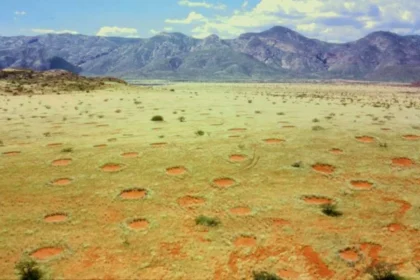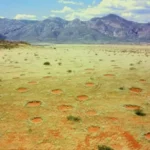After sunset, temperatures in the Sahara can drop from an average of 38°C during the day to an average of -4°C at night. But how can we explain this difference, and how do local animals and plants cope with such wild extremes?
If you’re taking a day trip to the Sahara Desert in North Africa, you’ll need plenty of water and sunscreen. But if you stay overnight, taking a comfortable sleeping bag with you is better.
Heat and humidity
Deserts cover about 35% of the world’s land mass, and they can be both hot and cold because of a combination of two key factors: sand and humidity.
Sand doesn’t retain heat very well: when heat and light from the sun hits a sandy desert, the grains of sand in the top layer absorb and release heat back into the air. During the day, sandy radiation from solar energy overheats the air and causes a sharp temperature rise. But at night, most of the heat in the sand is quickly radiated, making the sand cold.
However, this phenomenon alone does not explain such a sharp drop in temperature. After all, you won’t need a winter coat on a tropical beach when the sun goes down.
Another reason is that desert air is dehydrated. Humidity is almost zero in arid deserts such as the Sahara and Atacama. As you know, water vapor in the air traps heat near the ground, like a giant invisible blanket, and prevents it from dissipating in the atmosphere. Air with high humidity also requires more energy to heat, meaning it takes longer to cool.
Adaptation to extreme temperatures
Despite these extreme temperature changes, desert animals are well adapted.
“It’s generally a relatively minor problem for them,” said Dale DeNardo, an Arizona State University environmental physiologist specializing in desert animals. “The bigger challenge is getting enough food and water to survive.”
Reptiles are the largest and most diverse group of animals in the desert; they do not need to expend energy to maintain a constant body temperature but can use it, for example, for hunting. Small size plays an important role.
However, large, warm-blooded animals survive thanks to thick and dense fur, preventing them from getting too hot during the day and losing too much heat at night.

Plants are more vulnerable to extreme temperatures. They have a much bigger problem because they cannot move. This is why cacti have developed several defenses, such as spines and toxins, to protect their precious water from predators. However, low temperatures at night can be fatal to plants because water freezes and expands in plant tissue, which can cause permanent damage. This is why they only grow in places where the air temperature stays below freezing for more than a few hours each night.
Now, researchers are interested in the issue of climate change and how it can affect organisms in arid places.








